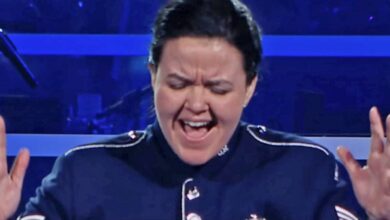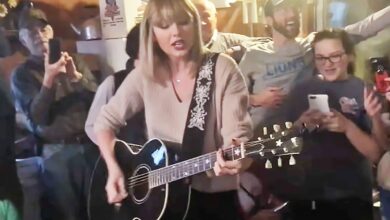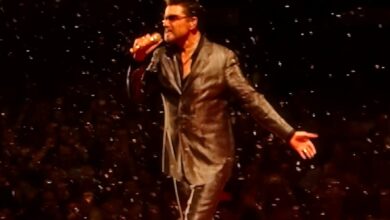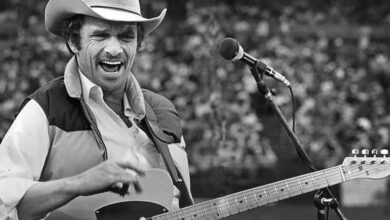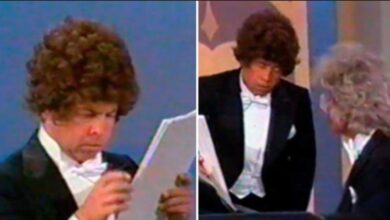Paul McCartney Lights Up Columbus with an Unforgettable Got Back Tour Performance at 83
It was a brisk November evening in downtown Columbus when Nationwide Arena transformed from a hockey venue into a temple of timeless music. The neon lights that framed its entrance flickered like an omen, announcing not just another concert, but a cultural moment. Hours before the performance, the streets pulsed with energy—fans clutching Beatles memorabilia mingled with others donning brand-new Got Back Tour hoodies. Excitement hummed in the cold air, and as people filled their seats, conversations circled around one shared truth: at eighty-three, Paul McCartney was still capable of creating magic. The anticipation was almost symphonic, swelling with every minute that passed.
The Got Back 2025 Tour had already taken on a near-legendary status before reaching Ohio. Billed as McCartney’s first major North American stretch in three years, it connected audiences from California to the Midwest, building momentum like a living legend on a victory lap. By the time the convoy arrived in Columbus for the fourteenth show, fans knew they were not just attending a concert—they were witnessing an unbroken legacy. This was more than nostalgia; it was a living conversation between past and present, proof that McCartney’s creative pulse hadn’t slowed, merely deepened with time.
When the arena lights dimmed, it wasn’t abrupt—it was a slow fade, the kind that makes your heartbeat sync with the darkness. A cascade of images filled the screens: glimpses of Liverpool, shots of Abbey Road, flashes of Wings tours, moments frozen from fifty years of music that defined generations. And then he appeared—Paul McCartney, guitar slung over his shoulder, smiling that familiar smile that somehow feels both personal and universal. The eruption that followed wasn’t mere applause; it was the sound of history coming alive. For an instant, everyone forgot how many decades had passed. It was as if time had folded back on itself.
Rather than ease the crowd in, McCartney launched into his set with energy that defied age and expectation. The first few songs sent a charge through the building, forcing the entire audience to its feet. His voice, while slightly worn from years of performance, carried the same warmth and conviction it always had. The mix was clear and intimate; even in the highest seats, every lyric landed. The balance of grit and grace in his delivery reminded the audience that while time may weather a voice, it cannot dull the truth behind it. People exchanged stunned smiles, realizing they were witnessing something far beyond routine brilliance.
What struck listeners most was the seamless flow of eras in the setlist. There were no partitions, no separations between Beatles, Wings, or solo material. McCartney treated his catalogue like a single continuous journey, threading “Band on the Run” into “Maybe I’m Amazed,” then drifting effortlessly into “Let It Be.” Every transition felt natural, like the songs were speaking to each other across decades. It was a masterclass in storytelling—each melody recalling another memory, each lyric adding depth to the next. The audience didn’t just listen; they lived inside that music, moving with it as though carried by one unbroken heartbeat.
Every show of McCartney’s is a collaborative act between artist and band, and Columbus was no exception. His longtime touring companions—Rusty Anderson, Brian Ray, Abe Laboriel Jr., Paul “Wix” Wickens, and the Hot City Horns—performed with the precision of veterans and the enthusiasm of fans. They played off McCartney’s cues with instinctive ease, weaving harmonies so tight they seemed telepathic. At moments when the rhythm turned raw and heavy, McCartney would glance sideways, grin, and dig in harder, feeding off their energy. What might have been another routine night on tour instead felt like an impromptu jam session that just happened to be taking place in front of twenty thousand people.
Throughout the evening, McCartney transformed the massive arena into something intimate, thanks to his gift for storytelling. Between songs, he slipped easily into anecdotes about the old days—joking about John’s sarcasm, recalling how George introduced him to the ukulele, or laughing about the madness of Beatlemania. At one point, he teased the crowd for only lighting up their phones during old Beatles numbers, calling the newer ones “black holes.” The audience roared with laughter, eager to prove him wrong, their applause echoing like an affectionate argument. It was moments like these that reminded everyone that the humor and humility behind the music had never left him.
When McCartney began his tributes, the atmosphere shifted from lively to reverent. With “Here Today,” his song written for John Lennon, the arena fell into complete silence. It was as if thousands of hearts were holding their breath. Later, he reached for the ukulele—George Harrison’s beloved instrument—and softly began “Something.” The song’s delicate start grew into a rich swell of sound as the band joined in, turning grief into grace. These were the moments that defined the night: simple, human, and profoundly honest. You could feel the generations around you connecting through shared emotion, a living thread of history binding them together.
When “Live and Let Die” exploded across the room, it felt like the roof might lift off the arena. Flames, pyrotechnics, and strobes filled every inch of space, while McCartney attacked the piano like a man half his age. Abe Laboriel Jr.’s drumming thundered beneath the orchestral blasts, and the crowd reacted with equal power—some jumping, others simply standing frozen in awe. The final explosion left a trail of smoke and cheers that lingered long after the lights dimmed again, proof that spectacle and sincerity can exist in the same breath.
Not long after, the mood softened again as McCartney sat alone behind the piano for “Let It Be.” The simplicity of the scene—soft light, a quiet stage, a single melody—made the performance almost sacred. Thousands of voices joined in, not as background noise but as a collective prayer. Some sang loudly, others just mouthed the words, while a few closed their eyes, absorbing the moment. It was the kind of connection no technology or recording could ever replicate—a shared human moment that hung gently in the air like light through stained glass.
@realryanmcc Paul McCartney performing “ Blackbird ” Live at Nationwide Arena Columbus #paulmccartney @Paul McCartney ♬ original sound – Ryan McCormick
@alltheworldsa_stage @Paul McCartney singing Blackbird was pure perfection. #paulmcartney #paulmcartneygotbacktour #columbusohio #beatles #blackbird ♬ original sound – Alltheworldsastage
“Hey Jude” brought the kind of joy that can only come from universal familiarity. McCartney turned conductor, dividing the crowd into sections, encouraging louder shouts, teasing those who hesitated. Generations sang together, bridging the distance between past and present. Parents lifted children onto their shoulders; older fans swayed arm in arm. The simple repetition of the chorus became something transcendent, a reminder that music’s greatest power lies in unity. The sea of waving arms, illuminated by phone lights, looked like stars rising inside the arena itself.
For the encore, McCartney returned with the kind of vitality that seemed to defy physics. He launched into a whirlwind of Abbey Road classics, culminating with “The End.” As he delivered the timeless final line—“And in the end, the love you take is equal to the love you make”—red, white, and blue confetti rained over the audience. The scene felt surreal, almost cinematic. He gave a playful wave, murmured “See you next year,” and disappeared into the wings, leaving behind an audience that wasn’t quite ready to believe it was over.
The real magic of the Columbus show wasn’t just in the sound or spectacle—it was in how time itself seemed to dissolve. Fans who’d spun Beatles records on turntables stood beside teenagers who discovered the same songs on streaming platforms. It didn’t matter how or when they found him; what mattered was that they were all there, singing the same words together. McCartney’s humor, warmth, and sheer presence made the performance feel immediate rather than retrospective. It wasn’t a farewell. It was a reminder that art this pure never fades—it adapts, evolves, and survives through those who love it.
@ronvallephoto Paul McCartney columbus 11/10/25 #paulmccartney ♬ original sound – ronvallephoto
When the final lights came up, no one rushed to leave. People lingered in their seats, humming stray choruses, comparing highlights, still wrapped in the afterglow of something extraordinary. Outside, as they spilled into the cool Ohio night, snippets of melody followed them—little fragments of memory that would linger far longer than the confetti stuck to their shoes. For a few precious hours, the world had stopped spinning, and everyone in Nationwide Arena had shared the same timeless feeling: that music, when made with heart, can outlast everything else.
That was the true brilliance of McCartney’s Columbus concert—it wasn’t simply a performance, but a gathering of gratitude. Gratitude from the audience for a man who never stopped giving, and gratitude from McCartney for the fans who never stopped listening. Every smile, every lyric, every story felt like a conversation that had lasted sixty years and was still unfinished. As the night ended, that sense of connection refused to fade, echoing through Columbus long after the last note had disappeared into the autumn air.
